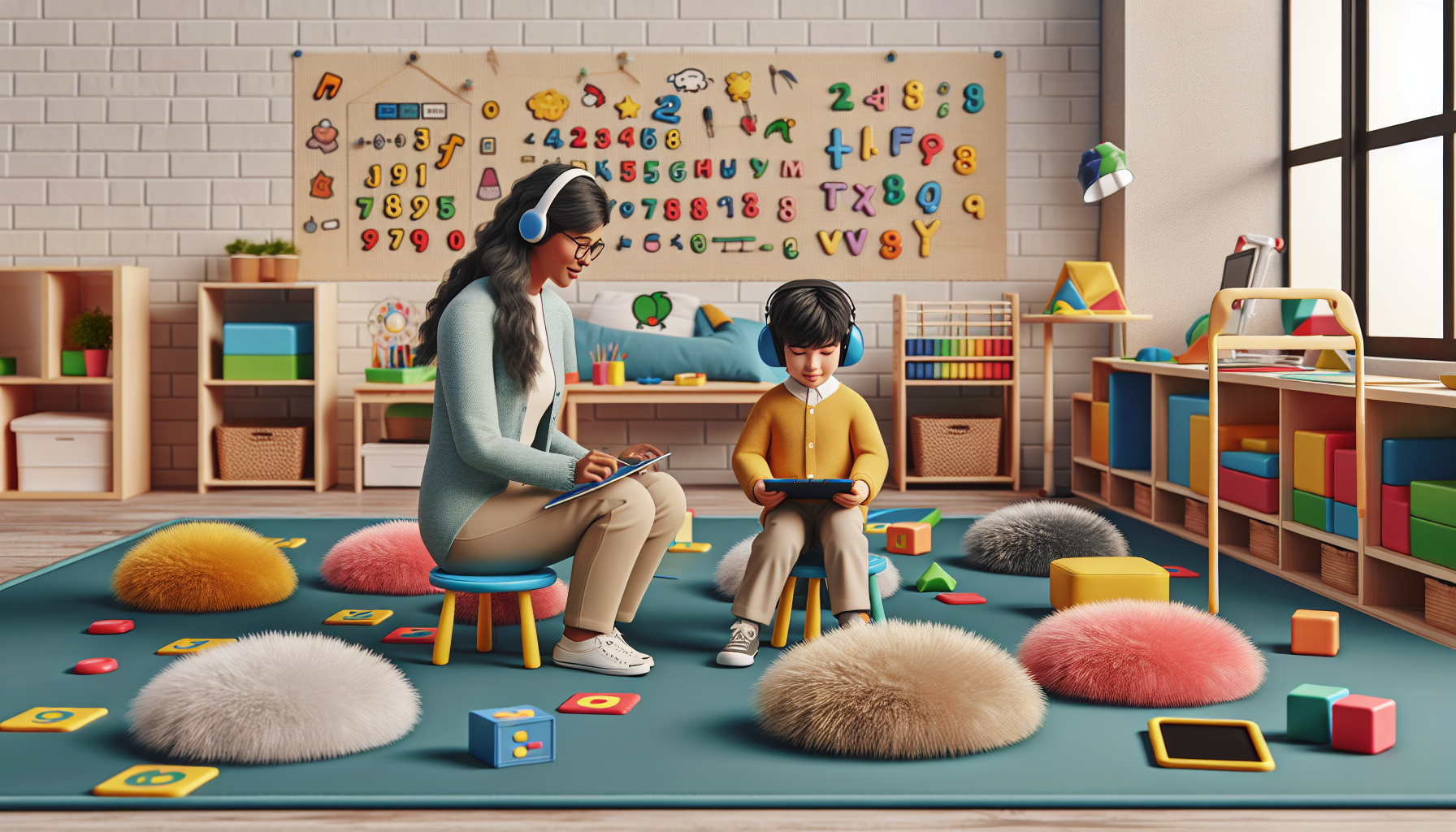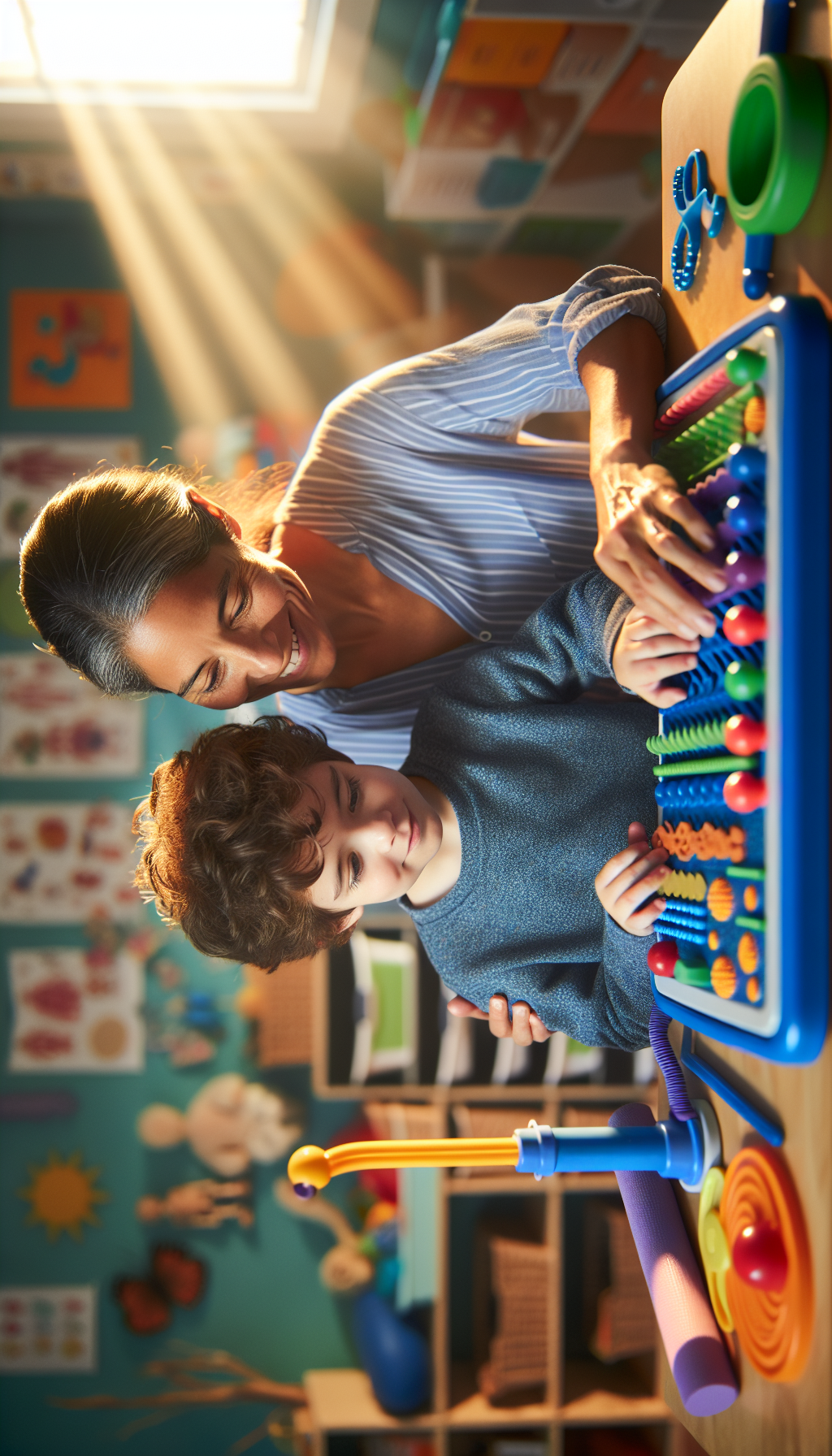The intricate relationship between sensory processing and academic performance is an area that has garnered significant attention in the educational and healthcare sectors. Sensory processing issues can affect a child’s ability to navigate the learning environment, which can have profound implications for their educational journey. In this comprehensive guide, we will delve into how sensory issues impact learning, the importance of sensory health in education, and strategies to support students facing these challenges.
Understanding Sensory Processing and Academic Performance
Sensory processing refers to the way the nervous system receives messages from the senses and turns them into appropriate motor and behavioral responses. For some individuals, sensory processing does not develop as typically expected, leading to difficulties in interpreting sensory information effectively. This can manifest in hypersensitivities (over-responsiveness) or hyposensitivities (under-responsiveness) to sensory stimuli, affecting a student’s ability to engage with their learning environment.
The impact of sensory processing issues on academic performance is multifaceted. Students may struggle with concentration, become easily overwhelmed by sensory stimuli in the classroom, or find it difficult to perform fine motor tasks like handwriting. They may also have trouble with gross motor skills, which can affect their participation in physical education and recess, essential components of a well-rounded school experience.
For a deeper understanding of sensory health and its foundational role in learning, one may explore Sensory Health, which provides a detailed look at the importance of sensory integration in overall well-being.
The Role of Sensory Integration in Learning
Sensory integration is a critical process that allows individuals to combine sensory input with previously stored information, memories, and knowledge to make meaningful responses. In an academic setting, sensory integration plays a vital role in tasks such as reading, writing, and math. A disruption in this process can lead to difficulties in these core areas, potentially leading to academic delays.
Sensory Integration and Reading
For successful reading, a student must integrate visual and auditory processing with the ability to focus and sit still. Sensory issues can disrupt this process, making it challenging for students to decode text and comprehend what they are reading. Strategies for supporting sensory needs, such as providing a quiet reading corner or using textured overlays to reduce visual stress, can be invaluable. For more insights on this topic, refer to the article on Strategies for Supporting Sensory Needs in the Classroom.
Sensory Integration and Writing
Handwriting requires fine motor skills, visual-motor integration, and proprioceptive feedback. Sensory processing issues can affect a child’s grip strength, hand-eye coordination, and the ability to apply the correct pressure on paper. These difficulties can lead to avoidance of writing tasks, impacting academic performance. Resources like weighted pens or pencil grips can be useful aids for students with sensory integration challenges.
Sensory Integration and Math
Math requires a combination of cognitive skills and sensory processing abilities, including visual-spatial reasoning and kinesthetic learning. Students with sensory issues may find it hard to manipulate objects for counting or to visualize mathematical concepts. Hands-on learning materials and sensory-friendly tools can provide the necessary support, as discussed in the article on Creating Sensory Friendly Learning Materials.
Strategies for Supporting Students with Sensory Processing Issues
Supporting students with sensory processing issues requires a multifaceted approach that includes creating a sensory-friendly learning environment, individualized educational plans, and collaboration between educators, parents, and healthcare professionals.
Creating a Sensory-Friendly Learning Environment
A sensory-friendly classroom can accommodate students with varying sensory needs. This may include:
- Noise-reducing materials to dampen auditory distractions.
- Flexible seating options, such as wobble chairs or therapy balls, to address the need for movement.
- Visual schedules and organizers to help students with processing and executive function challenges.
Individualized Educational Plans (IEPs)
IEPs can ensure that accommodations and modifications are in place to support the unique sensory needs of each student. This personalized approach is essential for helping students navigate their sensory challenges in the academic setting.
Collaboration
A multidisciplinary team approach, which may involve occupational therapists, speech-language pathologists, and psychologists, is crucial in developing comprehensive strategies to support students with sensory processing issues.
External Resources to Support Learning
For educators and parents seeking additional specialized resources, the following can provide valuable information and tools:
- The STAR Institute offers insights into Sensory Processing Disorder and strategies for intervention.
- Understood provides resources on learning and attention issues, including sensory processing.
- The Sensory Processing Foundation dedicates its efforts to research and education in sensory processing.
- Pathways.org shares tools for early childhood development, with a focus on sensory processing and motor skills.
Conclusion
Sensory issues can significantly impact a student’s ability to perform academically. By understanding these challenges and implementing strategies to create supportive learning environments, educators can make a difference in the lives of students with sensory processing difficulties. As research continues to unravel the complexities of sensory health and its implications for learning, the educational landscape will evolve to meet the needs of all students, ensuring that each child has the opportunity to reach their full academic potential.
For those interested in further exploring the intersection of sensory health and education, articles such as Developing Sensory Health Programs for Schools provide additional context and guidance on creating inclusive educational programs. By fostering an understanding and supportive community, we can help students navigate their sensory world and thrive in their academic endeavors.



